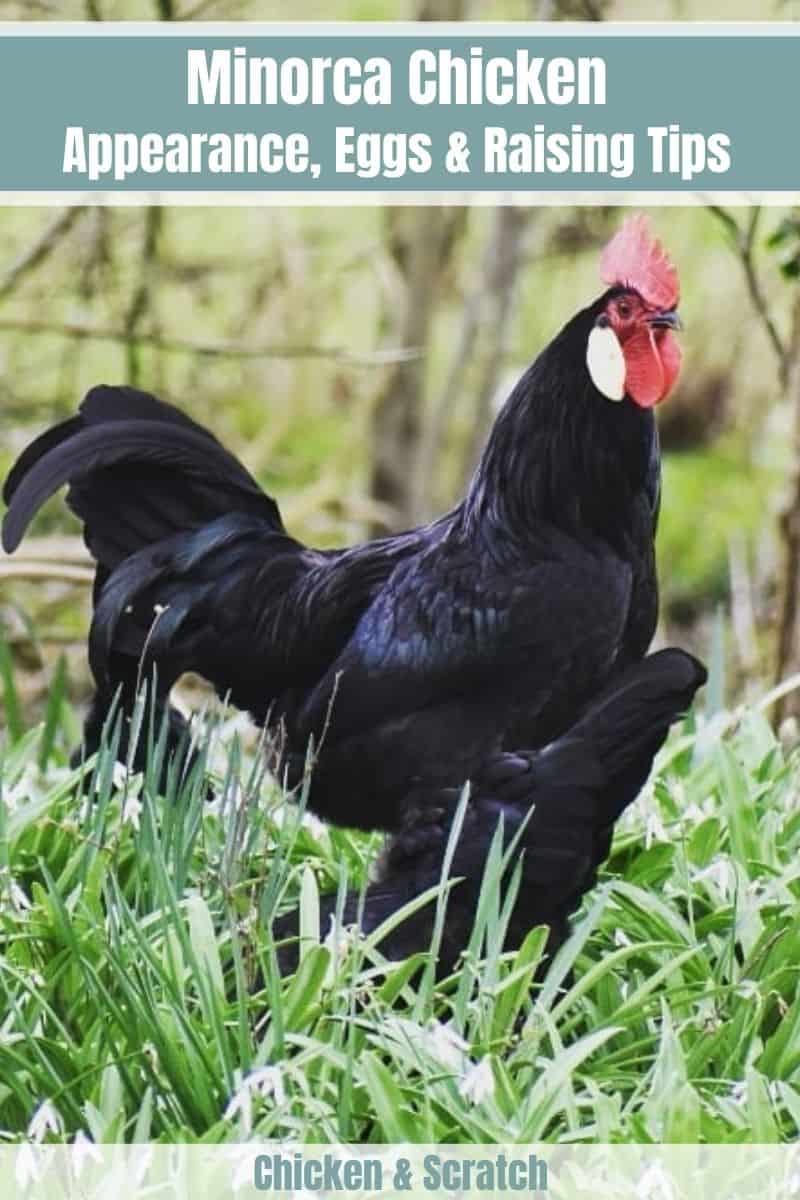Prized for its excellent egg production and ease of care, the Minorca chicken has been a favorite among poultry enthusiasts since the late 1880s. While it is not known to be a good sitter, this is a rugged and hearty breed that will add a splash of the Mediterranean to any flock.
Background and History of the Minorca Chicken
The Minorca chicken is a beautiful, heavy layer from the island of Minorca, off the coast of Spain. It was once found in large numbers on this island, often roaming free and foraging. However, their numbers have decreased in recent times, placing them on some conservation watch lists.
The exact history of the Minorca chicken is unknown, but several theories circulate. One theory claims that this large fowl originated from Africa, brought over by the Moors. As such, it was often referred to as the “Moorish fowl”.
However, some believe this breed came from Italy with the Romans. One thing is for certain; the Minorca chicken is a descendant of the old Castilian fowl, sharing many of its traits.
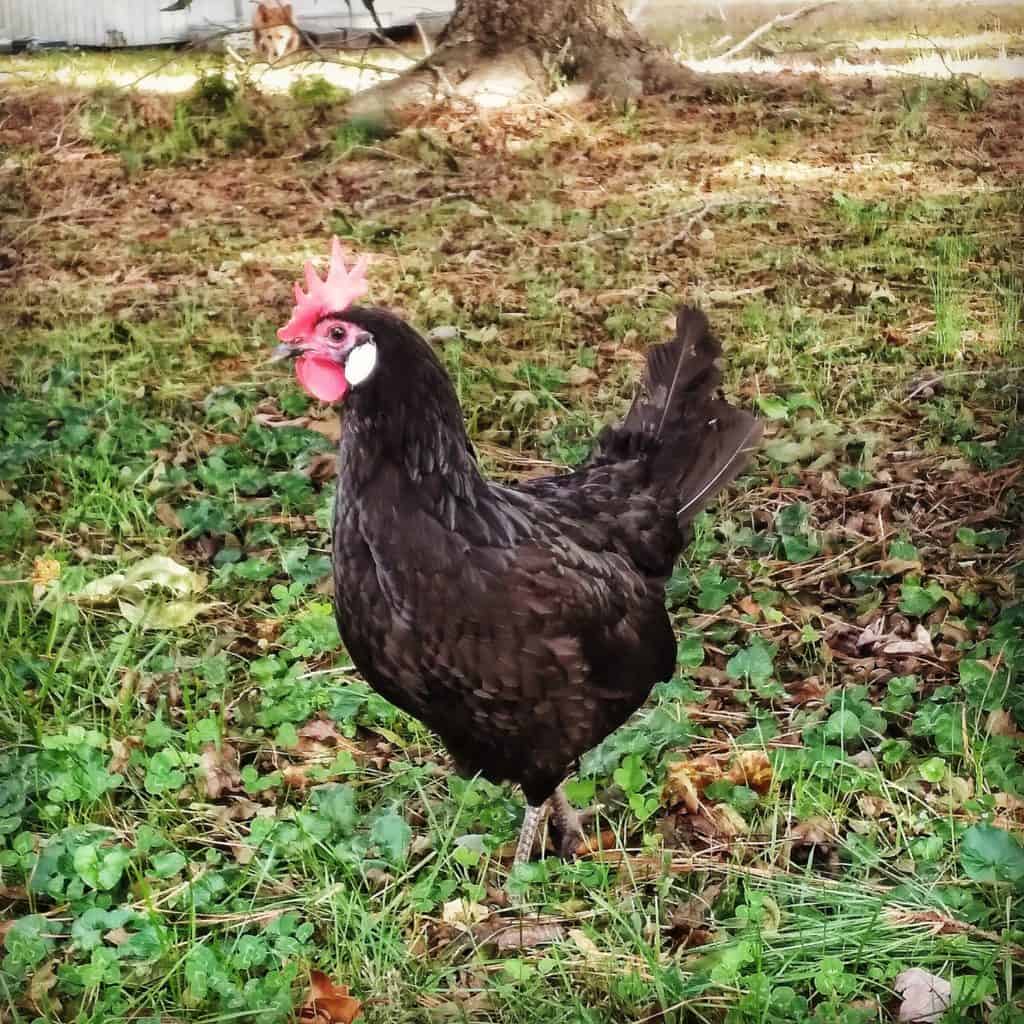
The breed was introduced to England around 1834. There are some reports of the Minorca chicken appearing in Devon and Cornwall as early as the late 1780s. Interestingly, the Minorca chicken was exhibited in Paris, France under the name ” Barbezieux“.
By 1884, Mr. J.J. Fultz brought the first Minorca chickens to American soil. The following year, Francis A. Mortimer brought the first white Minorca to America. They became fast favorites of farmers and enthusiasts alike. In fact, it was added to the American Poultry Association’s official breed guide, The Standard of Perfection, in 1888.
While there have been a number of attempts to modify them through selective breeding, there hasn’t been a notable change in its egg-laying ability. There have been some minor adjustments to its appearance, however, such as body size, comb, and earlobes. For this reason, the Minorca is still largely similar to how it was 100 years ago.
Breed Standard and Appearance of the Minorca

As one of the largest and heaviest of the Mediterranean breeds, the Minorca chicken can be quite a sight to behold. According to the American Poultry Association, these birds are recognized in black, buff, and white varieties. While black Minorcas are the most common, blue ones have also been observed.
Black Minorcas are often showcased in exhibitions due to the beautiful green shimmer that their feathers exhibit under certain lighting.
- Classification: Mediterranean
- Types Available: Large and Bantam
- Overall Size: Heavy
- Rarity: Common
- Purpose: Ornamental, Egg-laying
Officially recognized varieties of the Minorca include the single comb black, rose comb black, single comb white, rose comb white, and single comb buff. All Minorcas should have prominent, white earlobes of an oval or almond shape, large wattles, and prominent combs no matter the color of their feathers.
Minorca roosters should weigh around 9 pounds, while hens should be approximately 7.5 pounds. There may be some variance, but the standard for this breed is between 7 and 9 pounds.
Other features of this lovely chicken include the slate-colored legs, long and muscular bodies, and their compact feathering over white skin. They have large, long tails that help make them look larger than they actually are.
Minorca Chicken Personality and Temperament
Long-held as a farm favorite, the Minorca chicken is friendly, alert, and curious. They are known for their fondness for human company, though they do not require your attention. Because they are so calm and friendly, the Minorca chicken makes a great pet for children and also a good choice for first-time showers.
They are perfectly happy in confinement or free-ranging, though they can sometimes wander off while exploring. In confinement, these birds tend to remain calm and don’t make a big fuss. Due to their size, they are able to hold their own against more aggressive birds but aren’t known to be bullies themselves.
The Minorca breed is a fine forager, which helps cut down on the cost of feed. However, they are large birds and will need to eat a lot. If your foraging ground isn’t large enough, you will need to supplement with significant amounts to help the hens keep up with their prolific egg-laying.
This breed may lay a lot of eggs, but they are not known for going broody. They make okay mothers, but this isn’t one of their defining features. You might be better off allowing another hen to hatch and raise your Minorca chicks.
Egg Laying
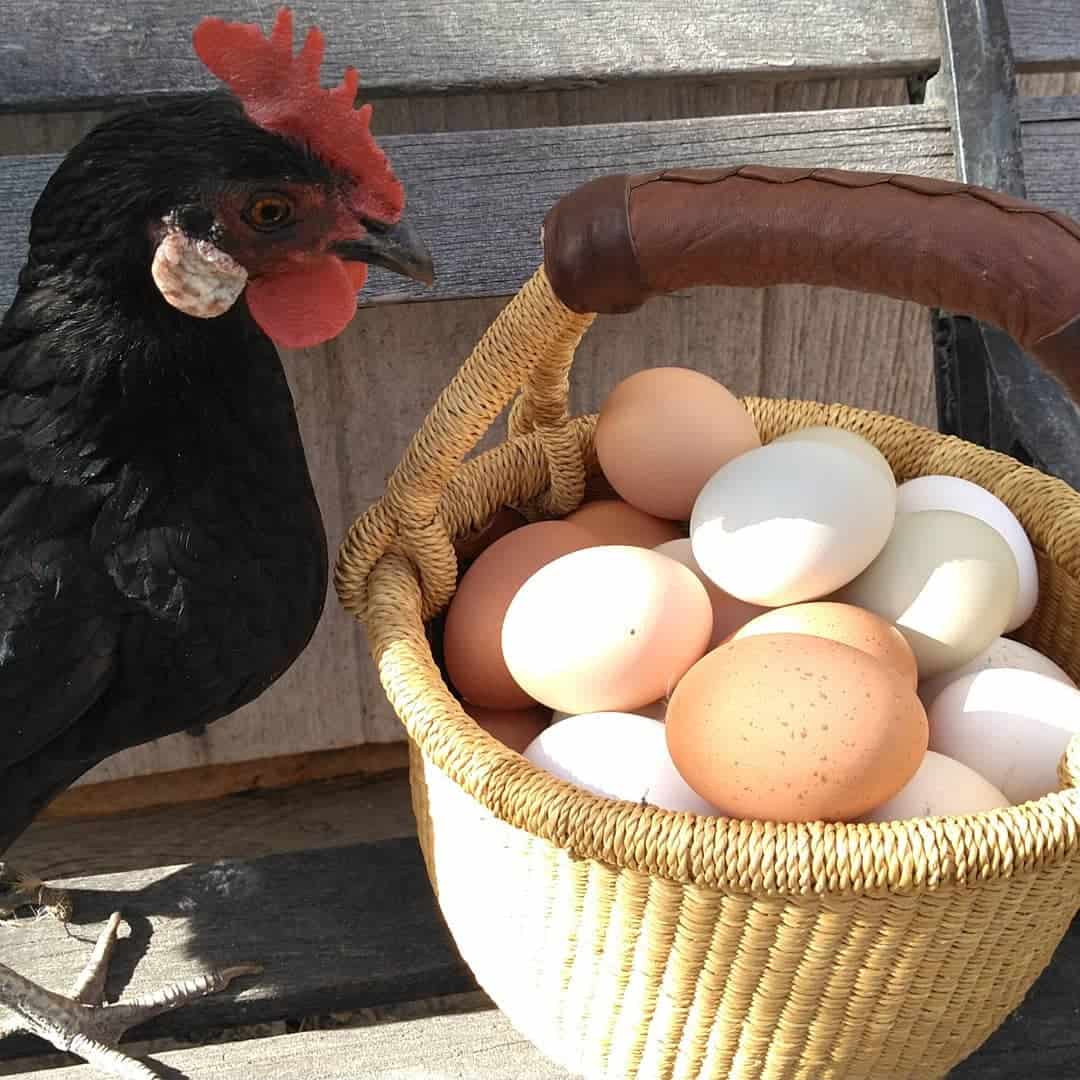
Once upon a time, the Minorca chicken was well known for its egg-laying prowess. Their prolific egg-laying was one of the qualities that made them so popular in the late 1880s and well into the 1900s.
However, as the breed was developed in the United States, more attention was put on their appearance than their utility. This resulted in a reduction in their overall egg production.
That said, even though the Minorcas of today have lower egg production than their ancestors, they are still considered good layers. You can expect to see around 120 eggs per year from each Minorca hen. In warmer climates, this average may be higher, reaching an impressive 220 eggs.
One advantage of having Minorcas in your flock is that they begin laying a bit earlier than other breeds. You may start to see eggs from about 26 weeks on.
Though Minorcas may not lay eggs all year round, they make up for the lack of production in the size of their eggs. These white, hearty eggs often weigh in at an impressive 65 grams each once the hens reach 57 weeks of age.
Health Issues and Care
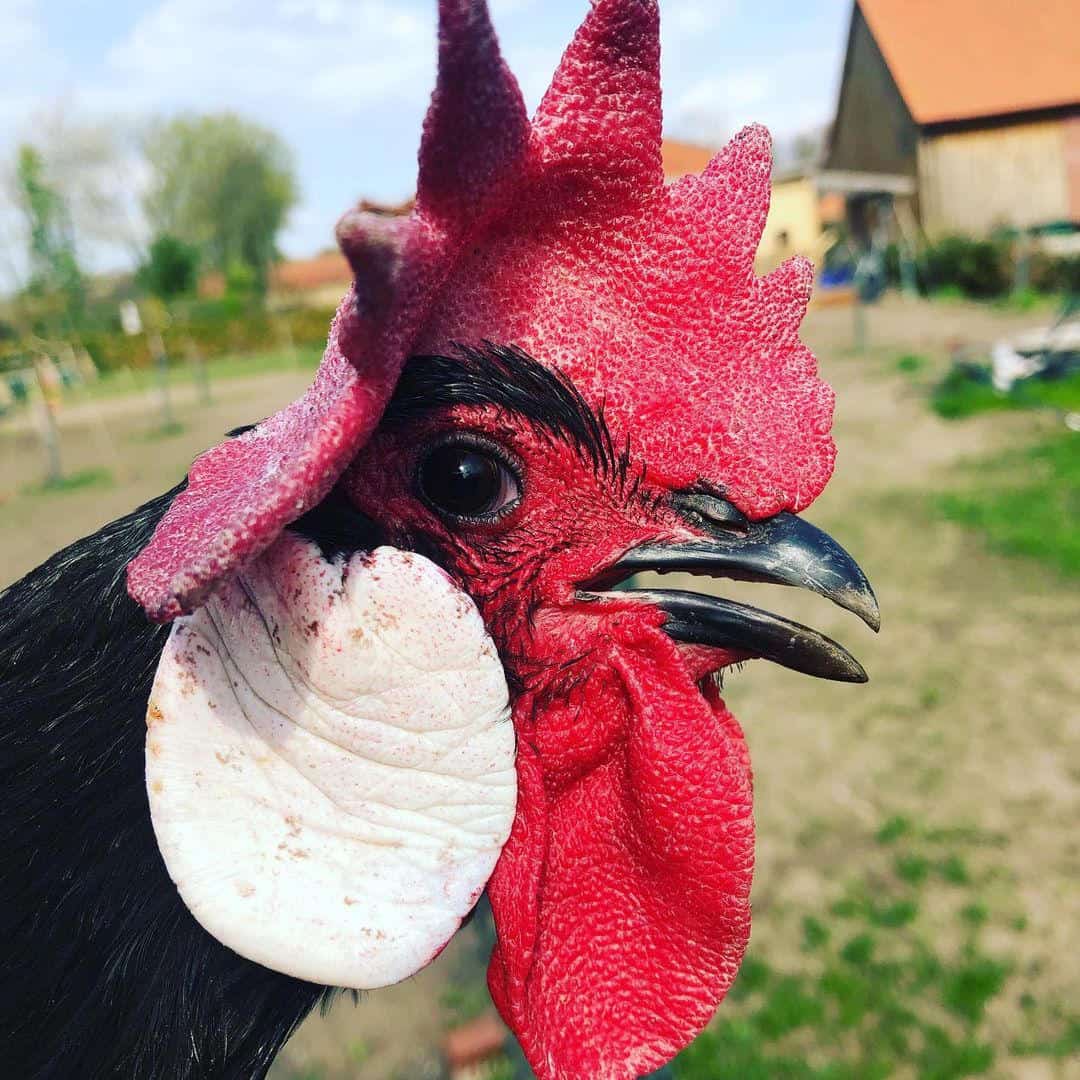
Minorcas don’t have any special health considerations. They are a relatively healthy breed that does well in many environments, soil types, and housing. Basic chicken care is all you’ll need to keep your Minorcas happy. The only thing to bear in mind is their heat and cold tolerance.
Since these chickens came from the Mediterranean, they’re especially suited for life in warm climates. They love to bathe in the sun and will spend hours lounging in the sand and dirt. That said, they’re not well suited for cold weather.
The main issue you’ll face with Minorca chickens is the risk of frostbite. Since their wattles, combs, and earlobes are so prominent, this presents a lot of exposed skin for frostbite to take hold.
To help these majestic chickens stay healthy and warm in the colder months, be sure to provide a draft-free coop, a covered outdoor run, and access to a heated area to keep the chill away.
5 Tips for Raising Minorca Chickens
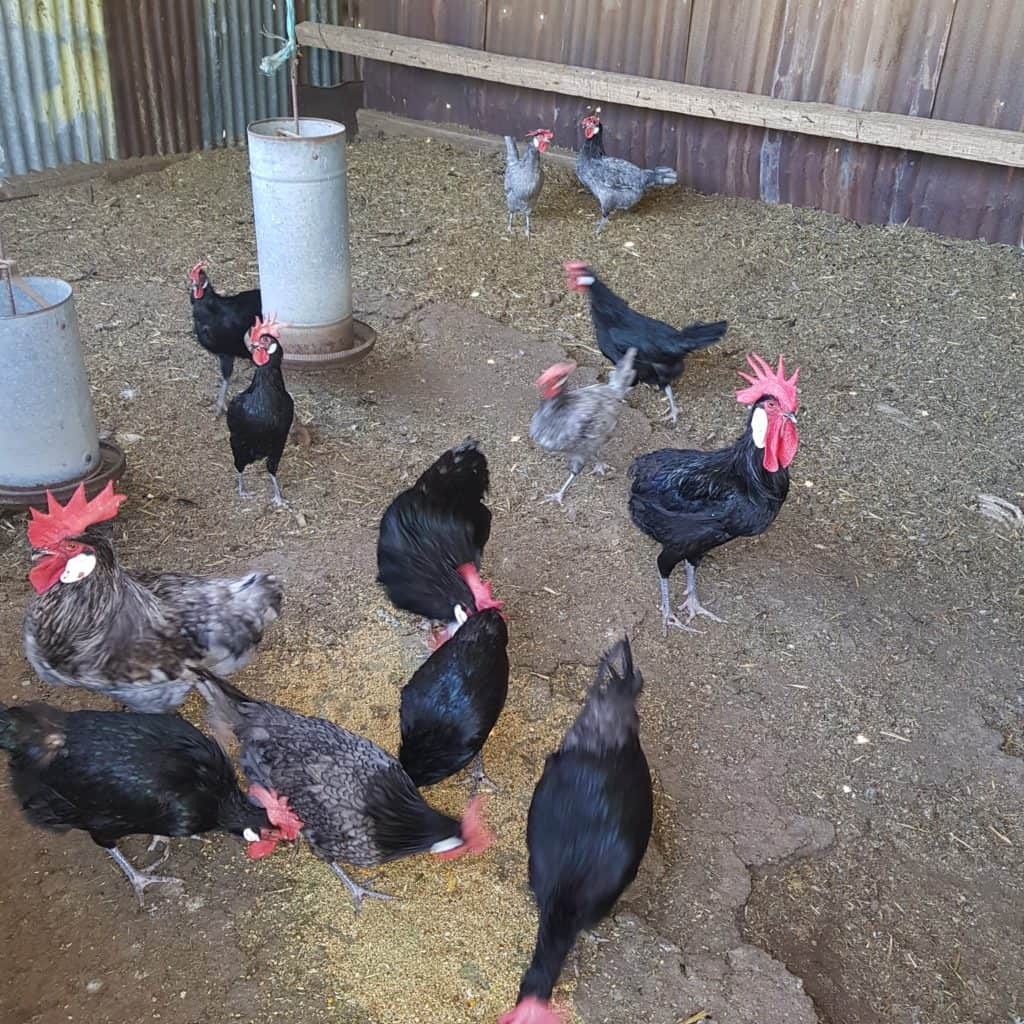
While Minorca chickens were once commonplace all over the world, their numbers have been dwindling. If you’d like to help preserve this regal and hardworking chicken breed, we have some tips to help you keep your Minorcas happy and healthy.
Start with the best
For an optimal Minorca-keeping experience, begin with healthy chicks or young chickens from a knowledgeable breeder. These birds will have a traceable lineage and a history of healthy ancestors.
Provide the best feed
Minorcas will benefit from a top-quality feed from hatch day onward. Be sure to choose a feed that provides enough calcium, protein, and other nutrients necessary at each life stage. Chickens, for example, should be fed a high-quality chick starter, hens should be fed special layer pellets or crumbles, and older chickens should be given supplements to ease them into their senior years.
Offer grit
Chickens don’t have teeth, nor do they chew their food. They need the grit to help them break down and digest their food. Foraging birds will eat small pebbles, sand, and dirt. However, it’s always best to provide clean grit to chicks, hens, and roosters, even if they’re free-range and foraging. This ensures they have the right type of grit.
Add oysters and eggshells
Laying hens need a lot of calcium to create strong shells, and Minorcas need more than most. Since their eggs are so large compared to body size, they will benefit from extra calcium in the form of crushed oyster shells. Some chicken keepers grind up chicken eggshells and feed those back to the hens, too. This is a great way to be sure nothing goes to waste.
Keep it clean
The coop should be cleaned regularly and sanitized as needed. Though Minorcas don’t have feathered feet and aren’t particularly messy birds, they do still need a clean place to rest at night. Ideally, daily raking would keep the coop maintained between weekly cleanings.
Summary
Minorca chickens are an old, trusted breed of great egg producers. They’re a friendly breed with a long history all over the world. Sweet-natured, curious, and easy to care for, this regal breed is a beautiful addition to any flock, collection, or farm.

Joseph Hudson has been raising chickens for over 15 years. In 2018, he completed the Agriculture & Natural Resources program at Mt. San Antonio College. He currently raises over 1400 chickens on his 7.5-hectare farm. He keeps sharing his experience on raising healthy and happy chickens on Chicken Scratch The Foundry.
